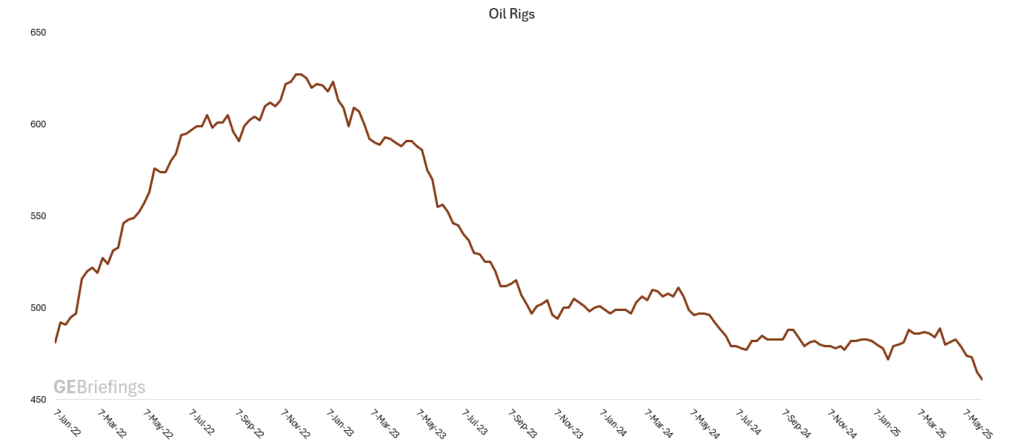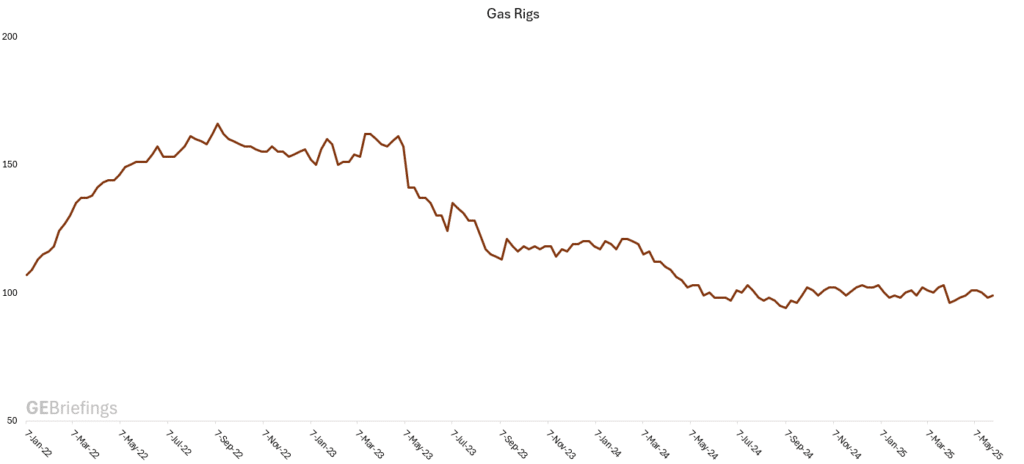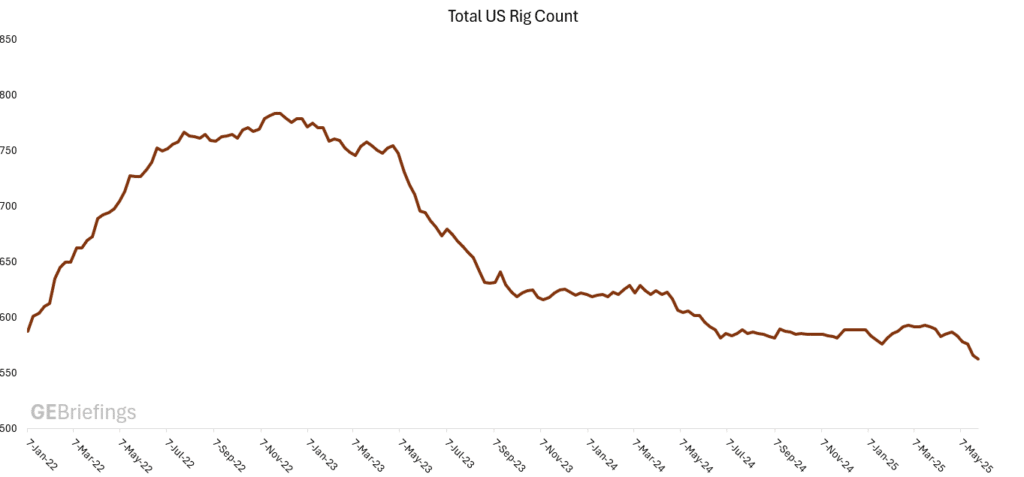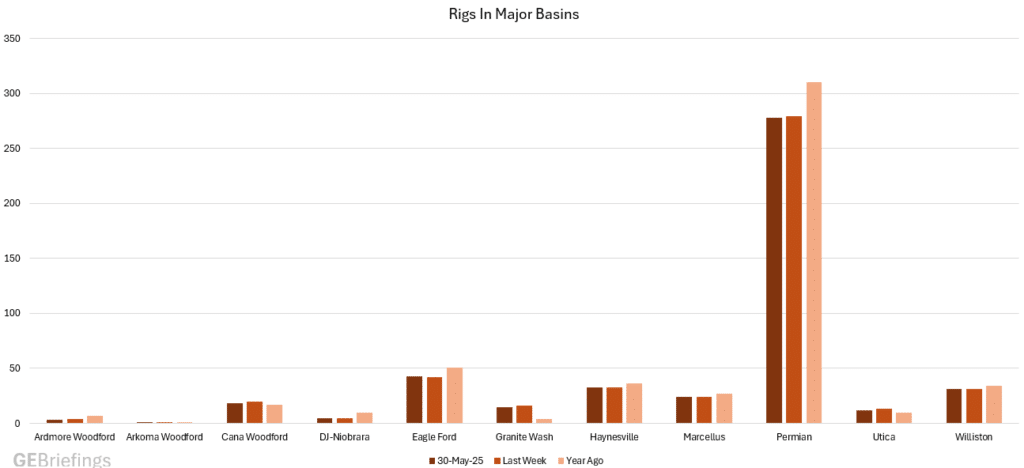The US Energy Information Administration weekly petroleum status report for week ending May 30 shows a higher-than-expected decrease in US crude inventories. Commercial inventories fell from 440.4 million barrels to 436.1 million barrels last week.
The US domestic production increased by 7000 barrels per day last week according to The EIA weekly report. Since the week ending December 27 the US domestic production has decreased significantly since its December 2024 peak, and with the continuous decline in active rigs according to Baker Hughes GE Briefings expects the domestic production to stay approximately at these levels before a further decrease in production at a later stage.
Last Saturday OPEC+ announced that the group will continue to accelerate the output increase and match the increase for May and June with a 411 000-barrel per day production increase for July. In the days before the OPEC video meeting Kazakhstan told reporters in the capital Astana that the country struggles to lower output and that they have little influence on western oil majors such as ExxonMobil, Chevron and Shell.
Wildfires in Alberta had Canadian producers shut down 350 000 barrels per day production offsetting some of the 1opec+ crude production hikes. The last few days rain has slowed the speed of wildfires, allowing some oil sand production to be restored.
Still, about 462,000 barrels a day of oil output is within 10 kilometres of out-of-control blazes that are at least 10 hectares.
Figure 1. West Texas Intermediate Contracts.

Figure 2. West Texas Intermediate the Last Five Days.

US Crude inventories and production.
US commercial crude oil inventories decreased by 4.3 million barrels in the week ending May 30, with market forecasters predicting between 0.5 and 1 million barrel-decrease in crude stocks. U.S. commercial crude oil inventories are about 7 percent below the five-year average for this time of year and 19.9 million barrels lower than a year ago. U.S. crude oil refinery inputs averaged 16.998 million barrels per day during the week ending May 30, 2025, 670 Kbpd higher compared to the previous week`s average. Refineries operated at 93.4 percent of their operable capacity last week. American production increased by 7 Kbpd last week at 13,408 million barrels per day, still a plateauing number and well below the production peak of December 2024.
Figure 3. US Crude Stocks including SPR at 837.9 million Barrels.

Figure 4. US Crude Stocks Excluding SPR at 436.1 million Barrels

US Rig Activity.
The total number of active rigs operating in the US according to Baker Hughes rig count decreased by Three last week, currently at 563. Oil focused rigs decreased by four last week, at 461 active rigs. Gas focused rigs increased by one last week now at 99 active rigs. Miscellaneous were flat last week still at three active rigs.
Figure 5. Active Oil Focused Rigs Decreased by Four Last Week now at 461

Figure 6. Active Gas Focused Rigs Increased by One Last Week now at 99

Figure 7. Total Active Rigs in the U.S. Decreased by Three Last Week, now at 563.

Figure 8. Rig Count in Major Basins.

Baker Hughes has issued the rotary rig counts as a service to the petroleum industry since 1944, when Baker Hughes Tool Company began weekly counts of U.S. and Canadian drilling activity. Baker Hughes initiated the monthly international rig count in 1975. The North American rig count is released weekly at noon Central Time on the last day of the work week.
By the Numbers June 4, 2025.

Disclaimer
This report is under no circumstances intended to be used for or considered as investment advice. This report is to be used as information and general market guidance. The author, GE Briefings and Investornytt cannot guarantee that the information from sources is without incentives, but the author has taken considerable care to ensure that, and to the best of his knowledge, material information contained in the report is in accordance with the facts and contains no omission likely to affect its understanding. Please note that this report is the author’s own research, opinions and conclusions, and the readers are recommended to draw their own conclusions based on other sources than this report, the facts and market picture can change in an instant and therefore the reader must do their own due diligence. The author, GE Briefings and Investornytt cannot be held responsible for the readers investments based on this report.





